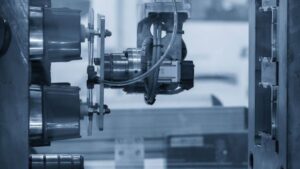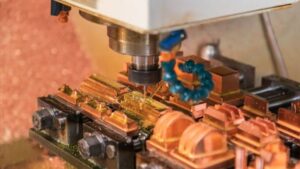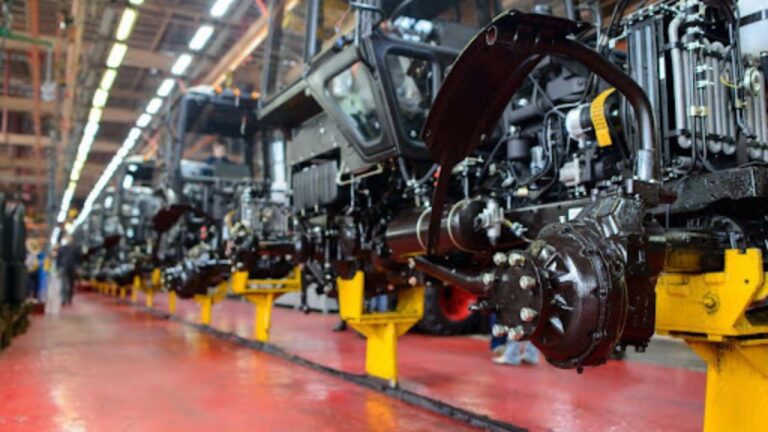Injection molding is one of the well-known technologies in manufacturing. Its significance in the automotive industry cannot be ignored. This method is accurate, fast, and adaptable for manufacturing intricate parts in large numbers. Due to constant changes in the applications, new injection molding companies are being developed. These are enhancing the design, environmental friendliness, and practicality of automobiles.
The Use of Injection Molding in Automobile Production
The traditional use of injection molding was in the manufacturing of plastic components. However, the technology has developed the idea to a much higher level. Automotive manufacturers are now using complex injection molding to produce complex parts. That was previously considered unattainable. The change from conventional commodities to advanced polymers has also improved the mechanical characteristics, such as reliability, and lightweight of molded components. These qualities are vital for today’s automobiles designed to increase fuel economy and decrease emissions.
-
Advanced Aesthetic Design
It is not only useful but also has a positive impact on the look of automobiles. This is particularly advantageous to automotive manufacturers as they can achieve intricate shapes and designs that are appealing to the eye and conform to today’s standards. This capability is particularly evident in the manufacturing of exterior body panels and trim pieces where smooth contours and complex geometries are very desirable for consumers. Also, the possibilities of applying different advanced surface finishes and textures in injection molding have changed how automotive parts appear and what they can feel like. Most manufacturers can now create parts that look like higher quality materials like metal or wood yet at a much lower cost and density. This innovation helps car makers provide customers with the look and feel of luxury cars while not compromising on the performance aspect.
-
Smart Technologies Integration
To meet these needs the world has seen a rise in integrated technologies as vehicles become more connected and smart. One of the most representative technologies in this regard is injection molding, which allows the manufacturing of complex parts that incorporate electronics, such as sensors. For instance, molded housings can be created to fit wireless charging pads, infotainment systems, as well as ADAS. In addition, injection molding is flexible in that wiring and electronic circuits can be incorporated into molded parts without difficulty. This not only minimizes the space required for the assembly but also decreases the time required to assemble the components and the probability of errors that can occur when assembling components of a product as done traditionally. With automobiles themselves integrating the Internet of Things (IoT) into their systems, It will have a significant role to play in the future.

-
Sustainability in Injection Molding
Environmental awareness is a rising factor in the automotive industry and injection molding has several opportunities for greener solutions. Today, many manufacturers are looking at bio and recycled materials for their molded parts. These are not only environmentally friendly options that can replace fossil fuels, but they also contribute to waste reduction and decreased carbon emissions in automotive manufacturing. Moreover, the evolution of injection molding technology includes energy-efficient machines and closed-loop systems that enhance sustainable manufacturing. It means that manufacturers can make vehicles more environmentally friendly by minimizing energy use in production and using fewer materials in construction.
-
Downsizing and Low COE
The most convincing use of injection molding for automotive applications is for the light-weighting of vehicles. It is becoming favored as the world shifts towards the use of lighter vehicles with less CO2 emissions and manufacturers seek to use lightweight materials instead of metal. For example, plastic mold maker used in interior parts like dashboards, console covers, and door panels can be made from lightweight plastics. It decreases the total weight of a car. Similarly, injection molding also enables designing in functions where several parts are required to be assembled, and this results in weight savings as well.
-
Customization and Flexibility
The automotive market is growing to be even more saturated with consumers demanding more and more individual and unique choices. This demand is well served by injection molding given the flexibility it offers in production. Molds can be changed by manufacturers to create new designs and other forms of a component without a high cost of rebuilding or time consumption. This capability enables car makers to provide consumer choices in terms of colors and other features that may not be available with a traditional painting technique. For instance, components made through injection molding can be colored to include specific lighting, texture, or brand, thereby improving usability and customer satisfaction.
-
Partnership and Intersectoral Cooperation
Apart from its use in the automotive manufacturing processes, injection molding is getting support from related industries. Automotive industries are now working closely with technology organizations, material scientists, and designers to expand the possibilities of injection molding. These result in the creation of high-performance composites and thermoplastics with improved characteristics suitable for high-stress applications in modern vehicles. Through these collaborations, more resources and knowledge are being combined not only to advance technologies but also to create a new culture of innovation that could shape the future of vehicles. In this context, as the automotive industry will increasingly endorse these collaborative initiatives, the opportunities for innovative uses of injection molding will remain open for further growth, thus outlining the prospect of developing smarter, safer, and more sustainable vehicles.

-
Challenges and Future Directions
The high level of manufacturing competitiveness means that manufacturers have to invest in new technologies continuously. Furthermore, the industry faces challenges that revolve around the supply chain, especially in acquiring environmentally friendly raw materials and achieving production optimization. In the coming years, prospects of injection molding in the automotive industry are promising. With the increasing popularity of electric and self-driving cars, the need for lightweight, high-strength, and high-performance parts will further grow. To address these new demands, manufacturers of automobiles will have to make some changes to the injection molding processes to stay on par with the latest automotive trends.
Conclusion
Injection molding has proved to be one of the biggest innovations within the automotive industry. Since it has provided solutions for design, functionality, and sustainability. While manufacturers are still trying to tap into the viability of this flexible technology, the automotive industry will surely be influenced by the innovations in injection molding. Injection molding will also be critical in the future of automobile manufacturing since it can manufacture lightweight parts, accommodate smart technology, and support sustainability.
